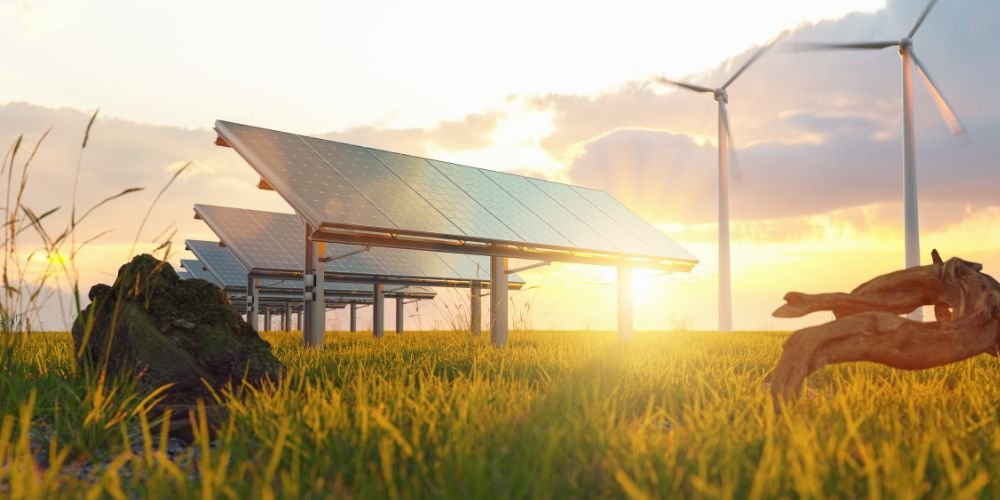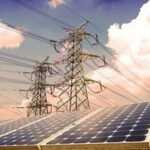Intermittent energy sources have become key contributors to the global transition toward sustainable and renewable energy. This comprehensive exploration delves into the intricacies of intermittent energy sources, unraveling their fundamental principles, key characteristics, recent innovations, notable applications, and their transformative impact on reshaping the landscape of power generation.
Understanding Intermittent Energy Sources
Intermittent energy sources refer to renewable energy generation methods characterized by fluctuations in their output, often influenced by natural factors such as sunlight, wind, or tidal patterns. Unlike traditional power sources, these renewables produce energy intermittently, posing challenges and opportunities for effective integration into the power grid.
Key Characteristics of Intermittent Energy Sources
The core characteristics of intermittent energy sources contribute to their uniqueness and influence how they are harnessed within the energy landscape:
- Weather Dependency: Intermittent sources, such as solar and wind, are heavily influenced by weather conditions. Cloud cover, wind speed, and other meteorological factors directly impact the energy output.
- Variability: Energy production from intermittent sources varies throughout the day and seasons. This variability requires careful planning and management to ensure a consistent and reliable power supply.
- Storage Challenges: The intermittent nature of these sources necessitates effective energy storage solutions to store excess energy during peak production times for use during periods of low or no production.
Recent Innovations in Harnessing Intermittent Energy
Recent innovations have addressed challenges associated with intermittent energy sources, making them more reliable and integrated into the broader energy landscape. Notable advancements include improved energy storage technologies, grid management solutions, and hybrid energy systems.
Advanced Energy Storage
Innovations in energy storage technologies, such as advanced batteries and thermal storage systems, enhance the ability to store surplus energy generated during peak production. These storage solutions contribute to grid stability by providing a reliable power source during intermittent periods.
Smart Grid Technologies
Integrating smart grid technologies facilitates more efficient management of intermittent energy sources. Smart grids enable real-time monitoring, demand response mechanisms, and dynamic adjustments, ensuring optimal energy utilization and grid stability.
Hybrid Energy Systems
Combining different intermittent sources or pairing intermittent sources with continuous power generation, hybrid energy systems provide a more consistent and reliable energy supply. These systems leverage the strengths of each source to overcome individual limitations.
Notable Applications of Intermittent Energy Sources
Intermittent energy sources contribute significantly to the diversification of power generation, with applications spanning from decentralized off-grid systems to large-scale utility projects.
Residential Solar Panels
Residential solar panels, a popular form of intermittent energy, allow homeowners to harness solar energy for their electricity needs. These systems can be grid-tied or equipped with energy storage solutions for increased self-sufficiency.
Wind Farms for Grid Power
Large-scale wind farms contribute substantial amounts of electricity to the grid. Their intermittent nature is managed through advanced forecasting, grid integration, and energy storage solutions, ensuring a reliable power supply.
Challenges in Harnessing Intermittent Energy
Despite significant advancements, intermittent energy sources face challenges that impact their widespread adoption and effectiveness. Addressing these challenges is crucial for renewables’ continued growth and integration into our power infrastructure.
Energy Storage Costs
While energy storage technologies have advanced, the costs associated with large-scale storage solutions remain a challenge. Lowering the storage cost is crucial for ensuring the economic viability of intermittent energy sources.
Grid Integration and Management
Integrating intermittent energy into existing power grids requires sophisticated management systems to balance supply and demand. Grid upgrades, energy storage, and advanced forecasting techniques are essential for effective integration.
Future Trends in Intermittent Energy
The trajectory of intermittent energy sources indicates exciting trends that will further redefine their capabilities and applications. These trends promise to enhance reliability, improve energy storage efficiency, and contribute to the overall sustainability of power generation.
Next-Generation Energy Storage
Ongoing research focuses on developing advanced energy storage solutions with higher efficiency, longer lifespans, and reduced environmental impact. Breakthroughs in storage technologies will play a pivotal role in enhancing the reliability of intermittent energy sources.
Artificial Intelligence for Energy Forecasting
Integrating artificial intelligence and machine learning into energy forecasting models enhances the accuracy of predictions for intermittent sources. These technologies can optimize energy production schedules and improve grid stability.
Conclusion
Intermittent energy sources contribute to the global shift toward sustainable power generation. From solar panels and wind farms to innovative storage solutions and smart grid technologies, the impact of these sources extends beyond intermittent challenges, contributing to a more resilient, diverse, and sustainable energy landscape.
Despite challenges, ongoing innovations in energy storage, grid management, and hybrid systems signal a promising future for intermittent energy. As research and development continue to push the boundaries of what is possible, intermittent energy sources are poised to play a central role in shaping a cleaner, more reliable, technologically advanced energy future.











